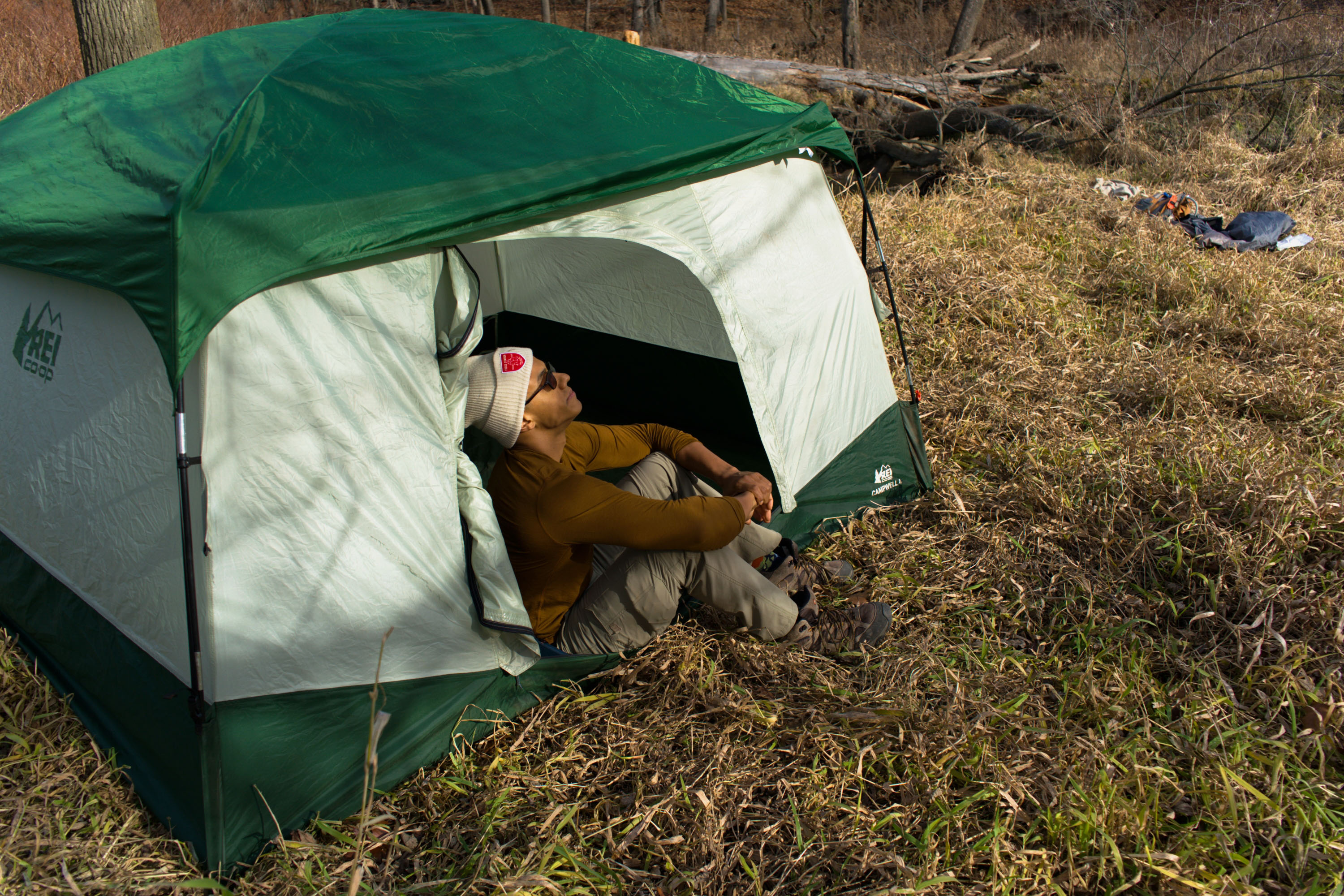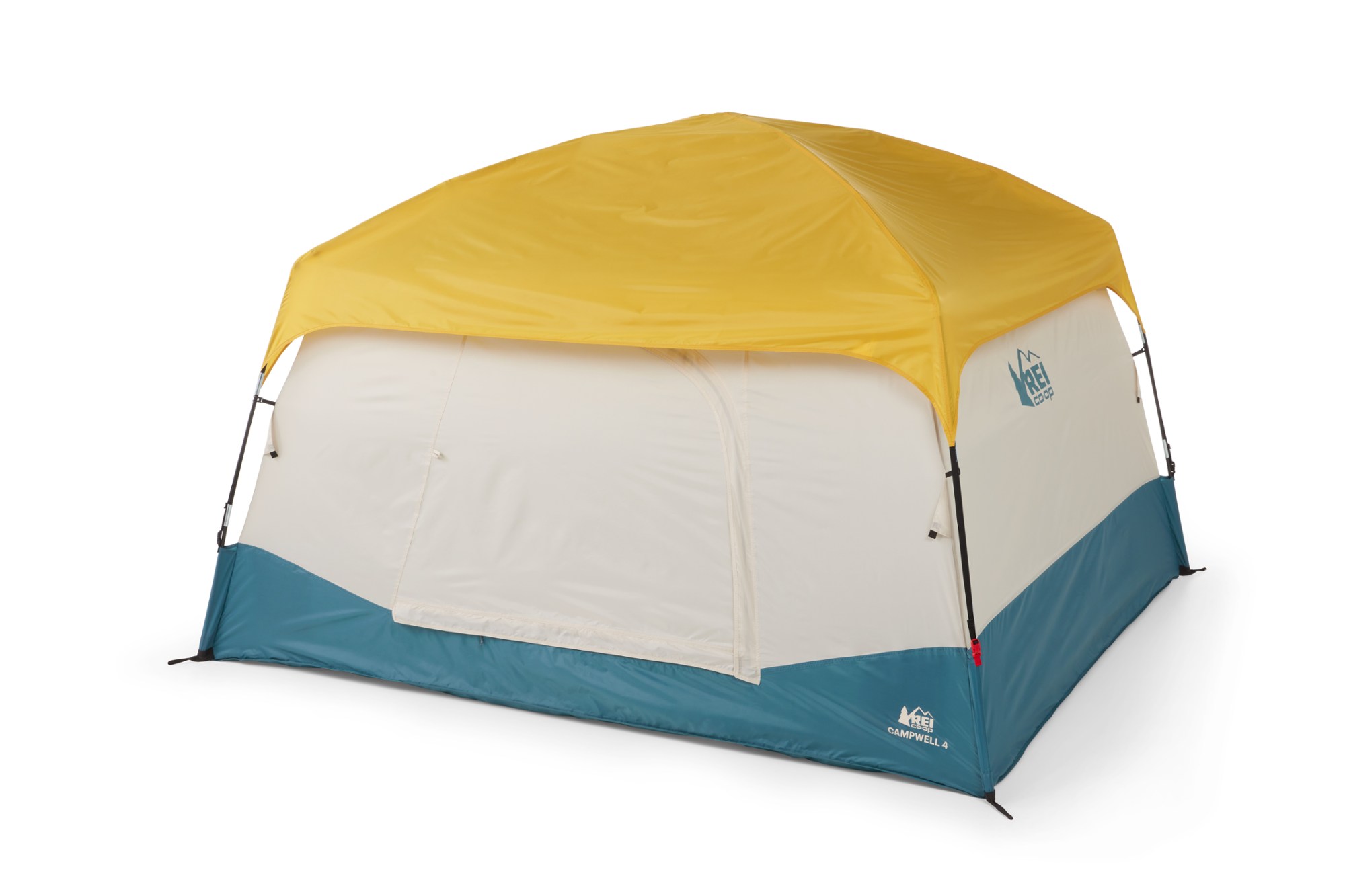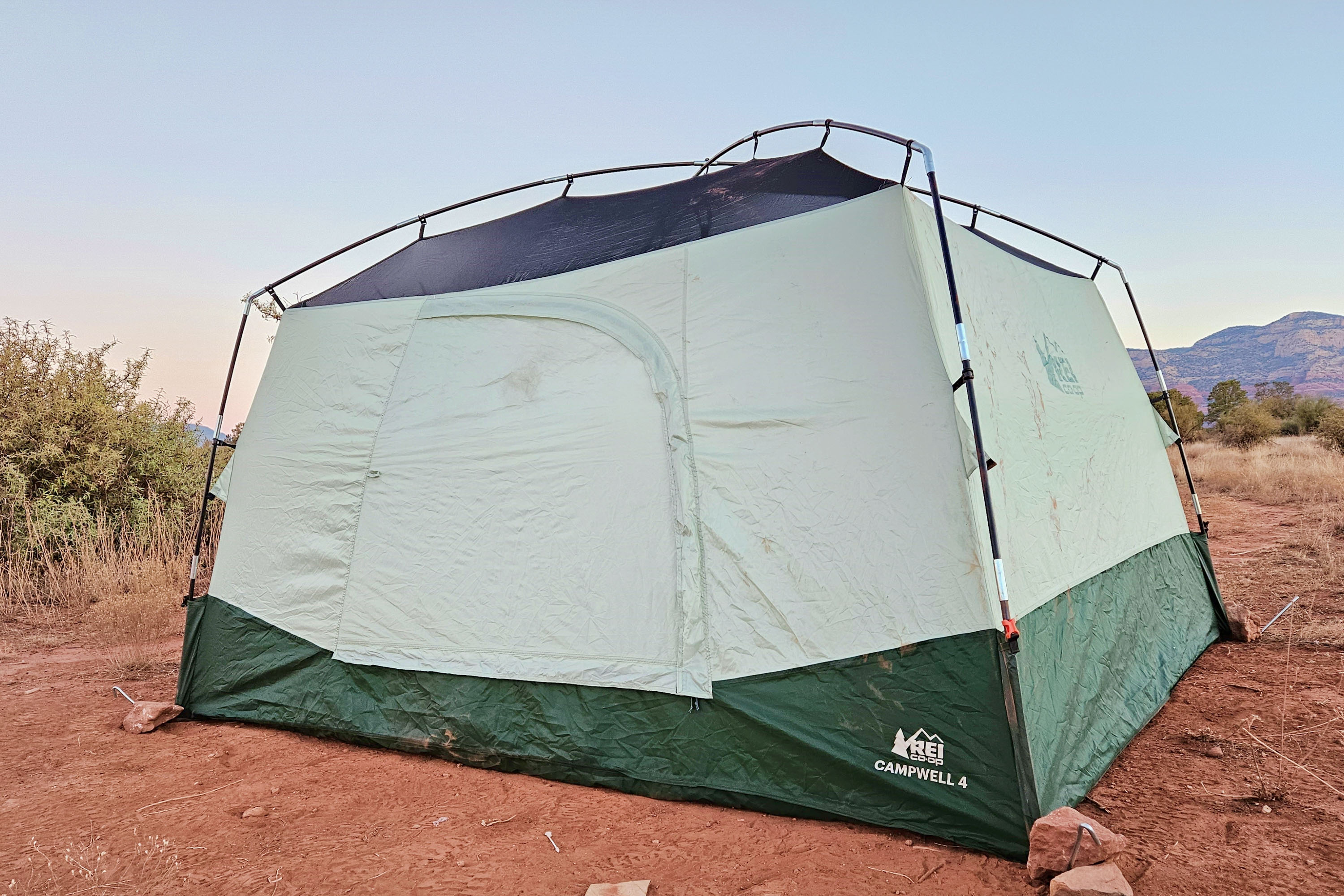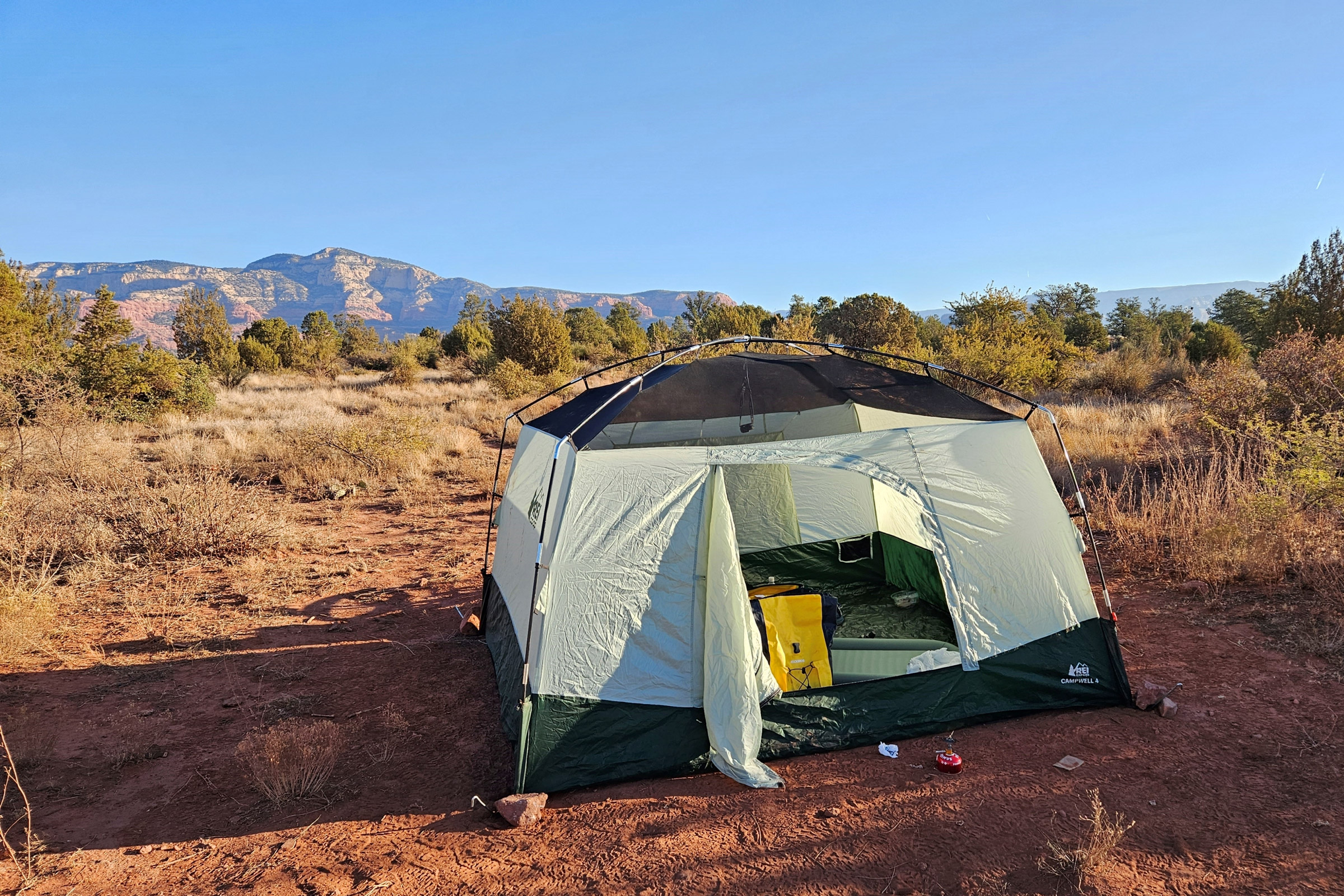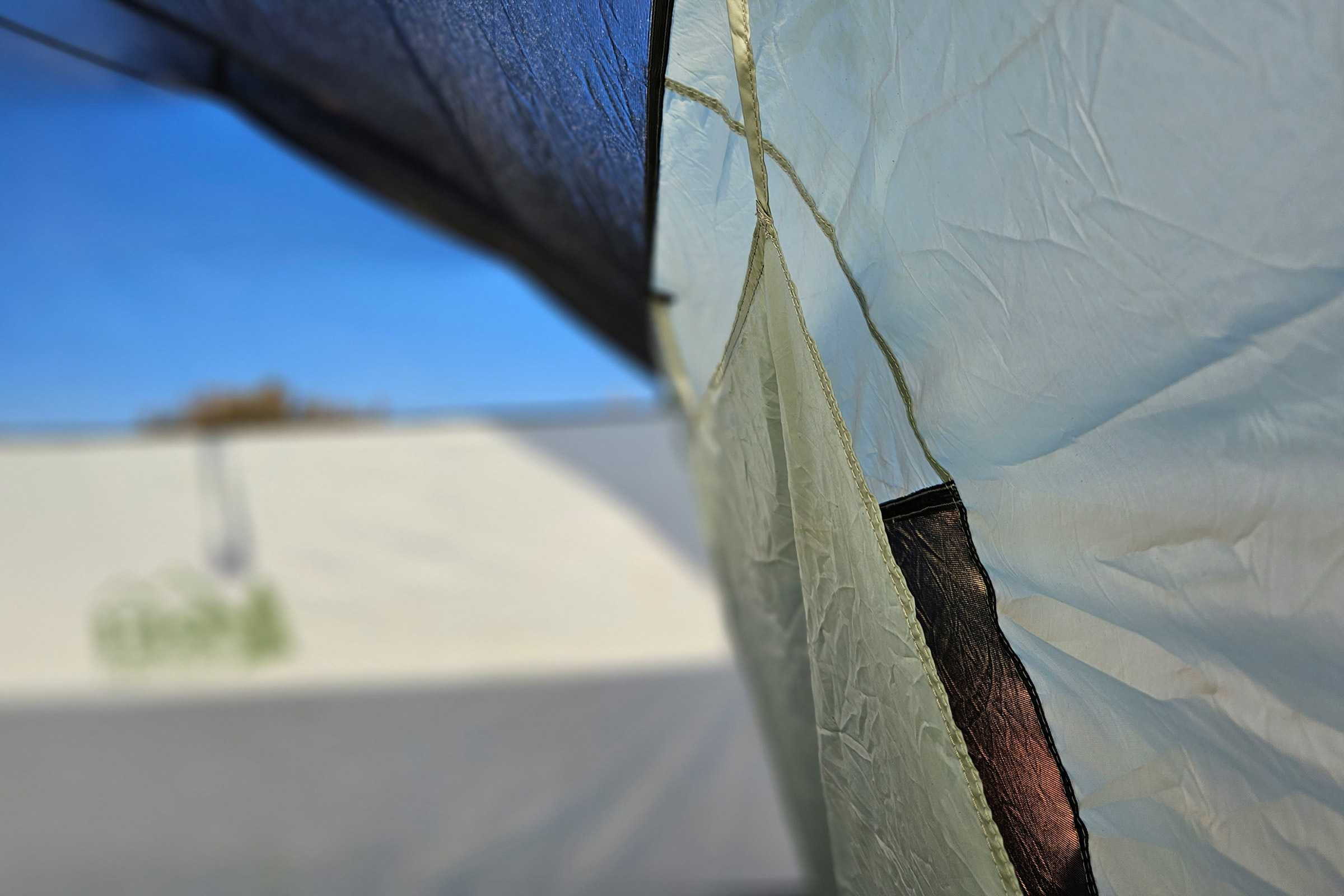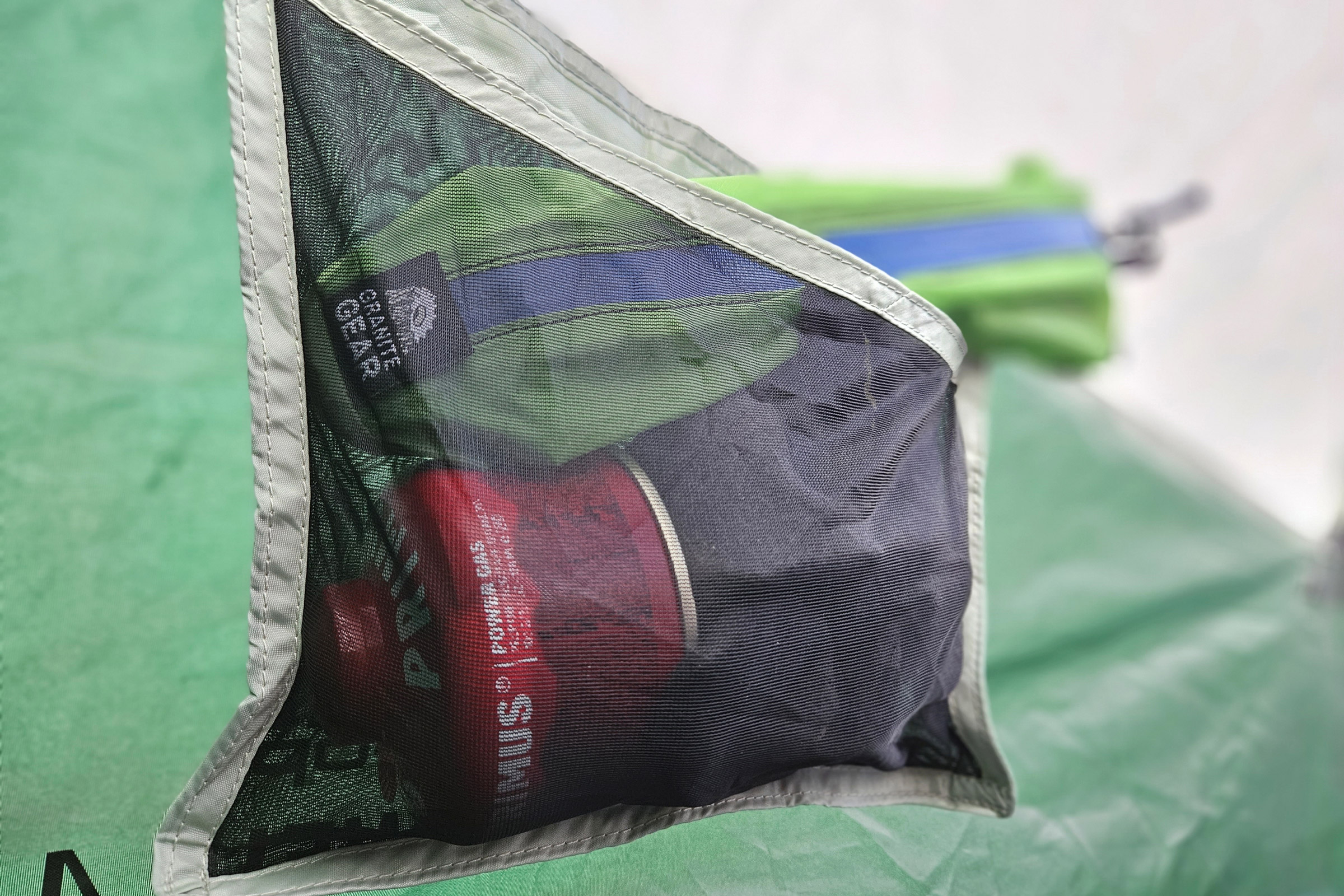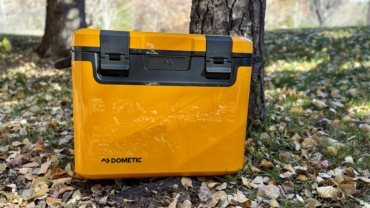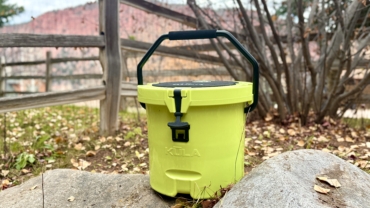Backpacking might be the face of outdoor adventure, bikepacking the new hotness, and ultralight the thirst trap for gear junkies everywhere — but no small shortage of people cut their teeth on old Coleman tents, and what adventures they can plan on a tank or two of gas. The new REI Co-op Campwell 4 tent is decidedly for these people, and offers a low barrier to entry to the outdoors.
As someone who spent their formative years camping in lean-tos, I have a soft spot for a good deal. So recently, my significant other and I were happy to make REI’s newest four-person freestanding tent our budget buddy for a 2-week trip across a swath of high country spanning sunny summits to sandstone canyons.
And although we were less than happy the one night we each thought the other had the poles, we got to see the good, the bad, and the budget cuts for the Campwell 4.
In short: The REI Co-op is aiming square at those shopping for their first tent, or their first upgrade from the Ozark Trail or Amazon Basics special, with the Campwell 4. It lacks some of the finer features of REI’s Skyward 4 tent and won’t handle a tempest as well as the company’s Base Camp 4, but the Campwell does offer a family-friendly concept, spacious floor, and the headspace to keep everyone comfortable all weekend long.
-
Livability
6.0
-
Weather Protection
5.0
-
Durability
6.0
-
Ease of Set Up
7.0
- Floor Area: 59 square feet
- Weight: 14 lbs.
- Internal Height: 62"
- Footprint Included: No
- Carry Size: 27.5" x 9.5" x 9.5"
- Seasons: 3
- Best For: Car campers on a budget looking to upgrade
Pros
- Budget-friendly
- Spacious footprint
- Plenty of headspace
- Quick setup with two people
- Robust tent poles
- Large skylight
Cons
- Minimal protection from driving rain
- Lacking ventilation with the rain cover
- No pull-outs for the broadsides of the tent.
- Drafty in stiff winds
REI Co-op Campwell 4 Tent: Review
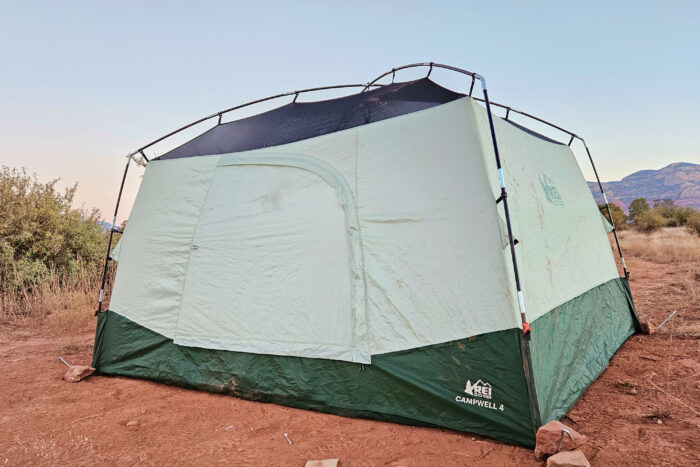
Who’s Camping Well?
I decided to use a bikepacking trip as an opportunity to test this tent on a route that ran from restless alpine winter winds, through a Grand Canyon garden, and into calm desert nights. Do as I say, not as I do: Backpackers keep trekking. Bikepackers keep peddling. Thrifty car campers and families, this one is for you. But for all intents and purposes, I got to know this tent pretty well.
At around 14 pounds, and carried as a nearly 28- by 10-inch log, the Campwell 4 is anything but lightweight. Nor should it be expected to be, as a budget car camping tent aimed at newer campers. Instead, the Campwell goes all in on spaciousness, with over 58 square feet of floor space.
The headspace doesn’t stack up to REI’s pricier Skyward 4 tent. Still, with 62 inches of head space at its highest point and 47 inches at its lowest, more vertically challenged campers will be able to fully stand up in the center.
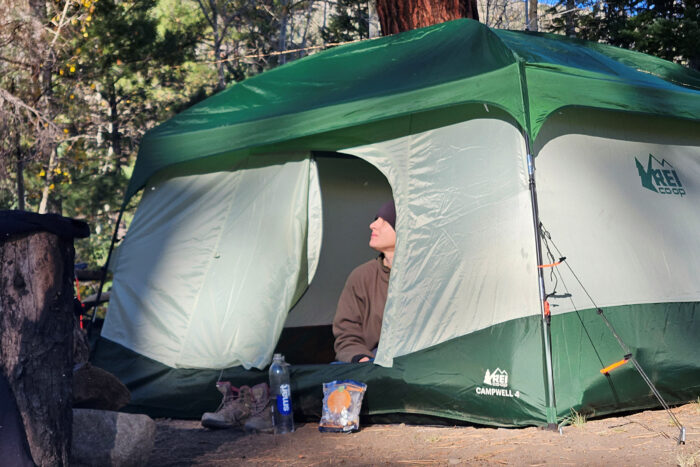
A frustrating setup and uncomfortable sleep is a sure way to sour new campers on the outdoors. So to bank on spaciousness, as the Campwell does, is a safe bet. Between the price and dimensions, the Campwell particularly makes sense for more neophyte families with kids or pets. While it may lack the amenities of some of REI’s higher-end tents, its basic setup is a good practice run for more complex shelters.
At $250, the Campwell slides in well below the prices of other, more specialized camping tents, and while it’s a bit more than your Coleman Skydomes and Kelty Tallboys, the Campwell would be the sort of intro tent that most wouldn’t sweat seeing — whether by unattended children or the dogs’ nails — get a little beaten up.
The Setup
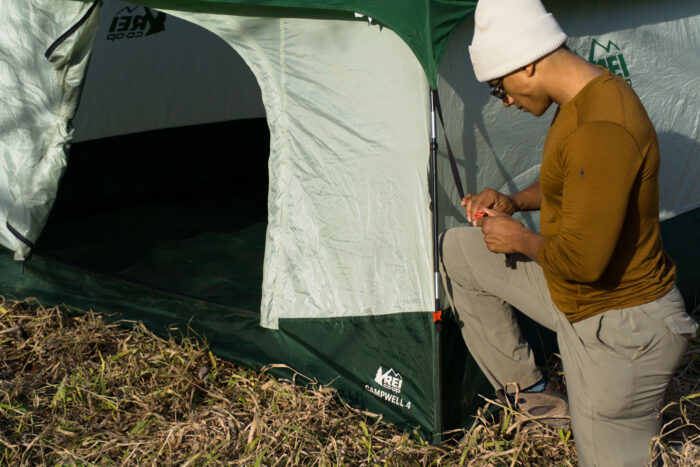
Setup for the Campwell is as straightforward as it comes. The crosswise fiberglass tent poles slot easily into the sleeves in the corners. As with most tall tents, if you’re stuck doing setup solo, it will be a bit of a pain.
The clasps tethering the tent to the poles snap secure easily — though not without some quirks. With each setup, I found tent pole connectors in the way of at least a few clasps. This forced me to anchor some of the clasps to the poles at odd angles.
At no point did having to do this compromise the performance or structure of the tent, however. Even so, the added stress on the seam, especially where the clasps are sewn directly in, does carry some concerns for long-term durability.
The tie-outs are angled down at about 30 degrees, making it easy to drive the stakes close to the tent. While this does minimize a tripping hazard, I’d still advise substituting the included black line for reflective cordage. Substituting the thick, heavy Shepard stakes for aluminum or titanium Y or V stakes would also cut considerable weight.

The short run between the tie-outs and stakes also minimized any opportunity for the line to stretch. Although, with all four tie-outs located in the corners, where the lines need to be snaked around the tent poles and they reinforce the broadsides of the tent against the wind the least — I found myself using them less often than I traditionally would.
Internally, the tent has a flap that can be stretched over the one mesh window opposite the door. Whether rolled up at the bottom or extended, the flap is secured by peg-and-loop anchors — making for a simple way to control ventilation.
Climate Construction

Any budget tent will have some construction compromises. In the case of the Campwell, it favors ease of setup over weather resistance. Camping through 25 mph gusts, however, I found its broadsides to hold strongly, with no threat of any damage.
Nights, however, were noisy and drafty, though the toupée-style rainfly was extremely easy to set up: match the color-coded buckles. Loop Velcro straps around the poles. Pull taut. However, as with most rainflies that anchor to the tent body, there was a limit on how taut I could get it.
The peg-and-loop anchors left me wishing for either elastic loops or a zipper to better tension the internal window flap. Oncoming winds, either direct or angled, often left a 2-inch gap where they could snake through. The flap blocked the brunt of the wind, but there was a noticeable draft. Between this and the fly’s slight sag, stiff winds made for noisy nights.
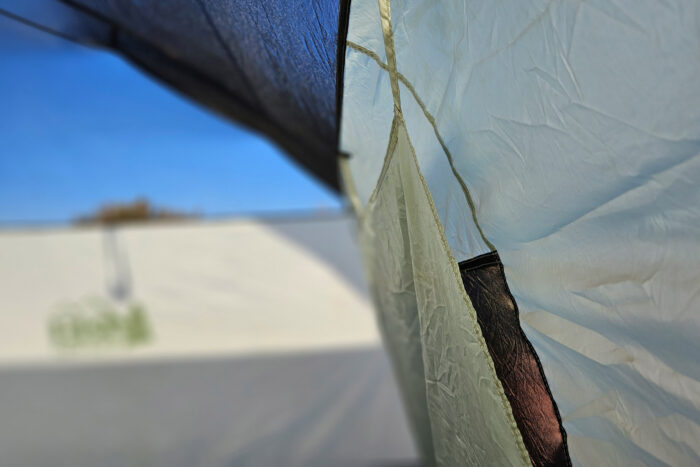
The rainfly’s waterproofing held fast throughout testing. Likewise, the sealed seam and tent body fabric beaded water impressively. The steep walls of the tent also made it easy for rain to roll off the tent.
Nevertheless, as with many toupée-topped tents, the Campwell sacrifices protection from driving rain. The overhang of the fly just barely protects the window. With the door open, rain can easily drip from the fly, into the tent. Any rain driving at the window could easily snake inside around the window reinforcement, just as the wind did.
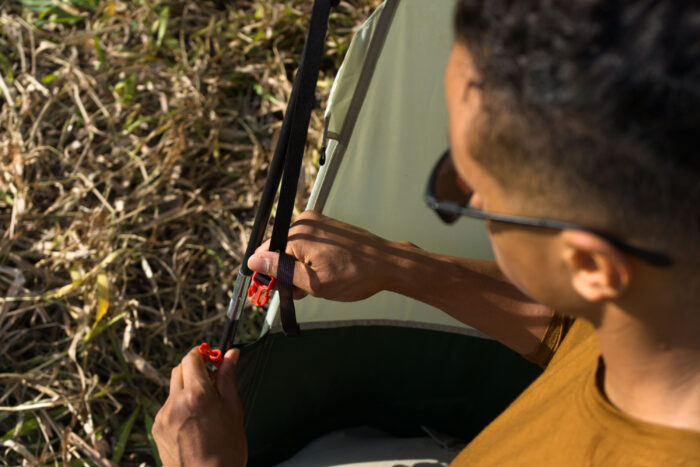
The massive mesh skylight does aid considerably with ventilation. However, with only one window and a meshless door, in any weather that calls for covering the topside with the rainfly, you’re entirely dependent on a consistent cross-breeze for ventilation.
If that weather comes during mosquito season, you’d be left with a choice: keep the door closed and mosquitos out — or let in the felon flies. And should that breeze be a stiff one, you might wish that some of the pullouts were on the tent’s broadsides instead of the corners, to quiet the flapping.
The Kickback

Setting aside the worst of the weather, the tent was rather comfortable. With a nearly 86- by 98-inch internal floor space, the Campwell is a four-person tent that can actually fit four wide-body 25-inch sleeping pads — with a slight squeeze.
Even fully populated, the tent’s steep sidewalls will keep those on the ends from feeling cramped. Unless standing fully upright inside a tent is a must-have, you’d be hard-pressed to say that the Campwell isn’t a proper four-person tent.
Given the tent’s height, any headlamp hung from numerous loops along the ceiling will provide a wide area of illumination. I did find myself wishing for overhead mesh pockets for headlamps, instead of loops. Still, a simple carabiner made hanging and retrieving my headlamp easy enough.
The door for the tent is rather large, with zips along the arc and bottom. Despite its size, a single door for a four-person tent makes for some fumbling around to step out at night.
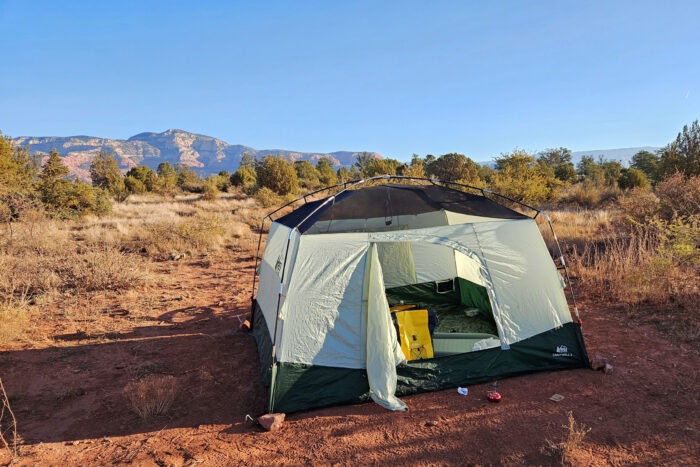
The only major marks against the Campwell 4’s comfort, come calling in foul weather. The two solid side walls and a window with wind protection make the tent feasible for winter camping — in mild winds. I also never had anything fail, even through gusty weather.
However, more than once I found myself waking up to the sound of the flapping window cover and rainfly. And as someone who calls Louisiana a second home, I’d caution campers of rainy, swampy summers to consider ventilation. A hot night, with little wind, but enough moisture to don the rainfly, would likely be a night with less sleep.
Campwell Conclusion: A Family Fair-Weather Friend
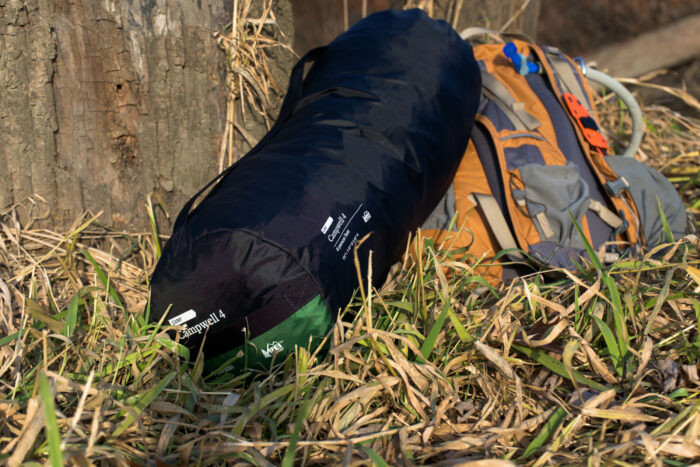
Most people at most campsites aren’t diehard ultralighters in top-to-bottom Dyneema, or hardcore expedition participants. They’re families and friends shopping on a budget and piling into the car, with enough self-preservation to see a big thunderstorm on the forecast — and reschedule.
That’s exactly for whom the REI Co-op Campwell 4 makes sense. It’s a classic square dome tallboy with a toupée topper for those who occasionally get caught in the rain — not those who chase it. In fair weather and on few funds, the Campwell is a simple, spacious, comfortable tent.
If you’re looking for fast and light, overbuilt, or all-weather, the Campwell 4 ain’t it. But if you’re looking for your first tent, or looking to get a friend a holiday upgrade from their Ozark Trail standby, REI will indeed have them camping well enough.
